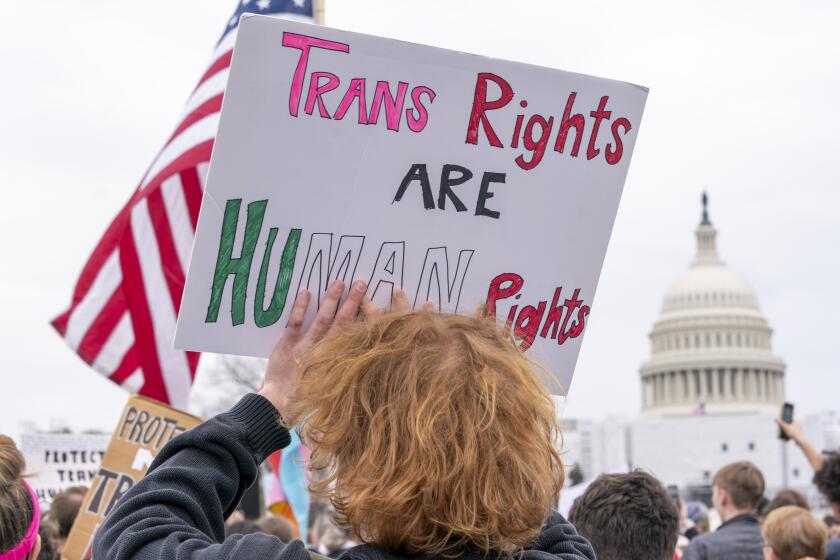Schools Score a Uniform Success : Education: Optional new outfits counteract gang apparel on some Inglewood campuses, giving students a sense of unity and pride. As a bonus, many students are also better behaved.
- Share via
At first glance they look like visitors from a Catholic school, with their identical burgundy sweaters, white shirts, gray slacks and plaid jumpers. But this is the public Centinela Elementary School in Inglewood, and the uniformed children are part of an experiment born out of fear of gangs.
Almost two years ago, Centinela parents who were worried that their children’s clothes could be mistaken for gang attire persuaded the Inglewood Unified School District board to make uniforms an option on the 1,000-student campus. The state Education Code prohibits public school districts from making uniforms mandatory.
“The result has been positive,” Assistant Principal Lacy Alexander said. “Uniforms counteract gang apparel. . . . They’ve set positive standards of dress and stress strong conduct in kids.”
But most important, Alexander said, uniforms have given the children a sense of unity and pride in their school.
Wynemia Taylor, mother of a kindergartner and a sixth-grader, said uniforms have given her children a “sense of pride that they belong to a good organization--not a gang.”
And for Rozanne Thompson, who was active in lobbying for uniforms at the school, “they take the pressure off children because the emphasis is not on what you wear to school.”
Thompson said uniforms have also been less costly than keeping up with the fashion trends for her second-grade daughter, Chastity. A complete uniform for either a boy or girl costs from $50 to $60.
Students’ opinions on uniforms vary.
Fourth-grader Erika Pope, dressed in a plaid jumper, white short-sleeved shirt and burgundy sweater, said she did not like wearing the uniform because it restricts her activities.
“My mother made me wear it,” the 8-year-old said. “But you can’t do anything good. I have to wear shorts under it to do flips.”
But 10-year-old Elizabeth Sanchez said she likes wearing her plaid uniform because it “feels fresh.”
When uniforms were first offered at Centinela in July, 1991, about 55% to 60% of the students wore them, Alexander said. The number has now stabilized at 35%. Still, the idea has caught on in the Inglewood Unified School District.
After the district adopted a uniform policy for elementary and junior high schools in May, 1992, the remaining Inglewood primary schools selected the uniform colors and began informing parents of their new option.
The district chose navy blue and forest green uniforms but allowed Centinela students to keep their uniforms in burgundy and gray.
Betty Jo Steward, principal at Highland Elementary School in Inglewood, said she has noticed an improvement in student behavior and parental involvement since the uniforms were introduced six months ago.
“The children in uniform act differently from those in street clothes . . . and the parents have become more involved,” Steward said. She attributes the changes to the sense of belonging that uniforms provide.
School administrators said students in the younger grades wear uniforms more than the older students, probably because of pressure from their parents.
“It’s not as successful in junior high or high school,” said Maurice Wiley, the district’s public information director.
But Liza Daniels, principal of Morningside High School, would like to see that change.
“I don’t see why the students wouldn’t wear them,” she said. “Uniforms are a part of a lot of respectable jobs like campus supervisors and police officers.”
After hearing from about 40 parents that they would like a uniform policy, Daniels said she plans to seek board approval to make uniforms available at Morningside by next fall.
The Lennox School District recently followed Inglewood’s lead, approving a uniform policy at Moffett Elementary School before the Christmas break.
On Jan. 11, 30% of Moffett’s student body came to school in the navy blue and white uniforms for the first time. Principal Brian Johnson expects the number to increase to about 70% by this fall.
More to Read
Sign up for Essential California
The most important California stories and recommendations in your inbox every morning.
You may occasionally receive promotional content from the Los Angeles Times.













